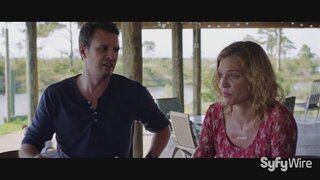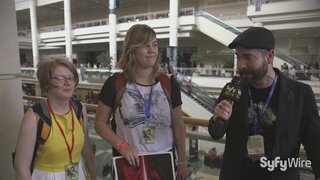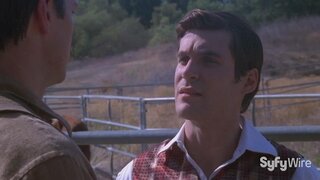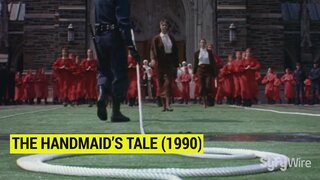Melting Permafrost Could Unleash Time Traveling Pathogens
When diseases start time-jumping, you know you're in trouble.
John Carpenter's 1982, science-fiction-horror classic The Thing centers on an Antarctic research facility and its encounter with an alien entity from beneath the ice. When the ice melts and an ancient organism is released, everyone at the facility is exposed and the whole of humanity is threatened.
For decades, the solution seemed simple: If you find something frozen in the ice, you leave it there. Now, though, the world is warming, the ice is melting, and ancient viruses are coming for us whether we like it or not. Figuring out how much trouble we might be in was the goal of a recent study published in the journal PLOS Computational Biology.
Ancient Viruses Waiting in the Permafrost
Permafrost is more or less what it sounds like, a layer of soil which has remained frozen for tens of thousands of years. There, scientists regularly find preserved organic material, like the mummified bodies of mammoths, so well preserved they seem as though they’ve only just died.
RELATED: Scientists Revive Worms Frozen for 46,000 Years in Siberian Permafrost
There’s little risk of a mammoth waking up after being thawed out, but smaller creatures are better at surviving full body freezing and walking away on the other side. Just ask these nematode worms who were frozen for 46,000 years before wiggling their way into the future.
And if you think worms are good at sleeping their way through the millennia, just wait until you hear about viruses. Researchers were interested not in any particular pathogen, but in the likelihood that one or more of them will infiltrate our ecosystem and muck everything up.
Researchers modeled interactions between an ancient virus and modern bacteria in a computer simulation. Then they ran that simulation thousands of times to see what would happen. That way, they could crunch the probabilities that a killer virus frozen in the deep past might wake up and wipe out all life on Earth. In most cases, invading viruses had little if any effect on the simulated ecosystem. That’s the good news. The vast majority of invading viruses just aren’t very good at getting a foothold. Now the bad news.
In 1.1% of simulations, an invasive virus had a substantial impact on its new environment. Importantly, not all impacts were negative, at least when looking at the whole ecosystem. In the worst cases, biodiversity in the ecosystem dropped by 32%, nearly a third. In the best cases, species biodiversity actually increased by about 12%. To be clear, that does not mean that the viruses wiped out 32% of life in their simulated ecosystem, just that there was significantly lower genetic and species diversity in the ecosystem.
Is an Ancient Virus Coming For Us or Not?
While a 1.1% risk might seem low, we need to know what our sample size is. Scientists estimate that ordinary melting releases roughly 4 sextillion cells from the permafrost each year. To be clear, that is a 4 with 21 zeros following it. Even if we reduce to just 1.1% of that total, we’re looking at a number of potential exposures that you can’t really get your head around. It’s more than the number of stars in the Milky Way, and it’s not even close.
RELATED: Band-aids not helping with that infection? Try putting a virus on it
The point is, there are a staggering number of opportunities for an upstart virus hoping to make up for lost time. The good news is that people don’t tend to group in places covered with permafrost. It is, sort of by definition, not an awesome place to live. Consequently, if and when dangerous pathogens are released, they’ll at least be in one of the least populated places on Earth.
The point is, ancient viruses are probably not waiting to emerge from the permafrost and turn us into tentacled monsters. But if you do find one, it’s your job to destroy the helicopter and make sure it never gets out.
For further instructions, catch The Thing, available from Universal Pictures.

















































